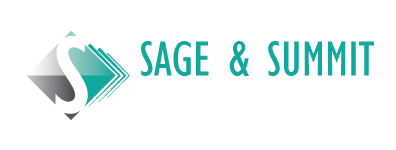Following is a synopsis of our June 30th panel discussion on what business leaders can expect going forward.
With no shortage of insights to consider, we have boiled the panelist’s thoughts down to 4 categories of
- Flexibility
- Communication
- Health & Safety
- Technology
1. Flexibility
The past 18 months has taught us that things can change at a much faster pace than we ever thought possible. Our panelist agreed that going forward, flexibility is key to prospering, and perhaps even survival. We will look at 4 areas of discussion regarding: Remote Work Models; Employee Considerations; Customer Considerations and Organization Operations.
3,2,1 Masks Off Panelists
- Steven Knight
Partner, Mosaic Home Services - Anna-Marie Cuglietta. Stuart Olson (V.P. H.R.)
- Amir Shami
CEO & President, Rotaflow - Christopher Munroe
Partner, Groper Greyell - Moderator – Marderé Birkill
CEO, Sage & Summit Consulting
Remote Work Models
Fully remote and more pervasively, hybrid (remote and office) working models were tested during covid, and they are here to stay. As Christopher noted, employees want a choice so don’t cancel your lease just yet. Other items for consideration are:
- The hybrid mix is new to most companies so employers need to be willing to learn and pivot if things are not working. Organizations, like people will do well to keep a beginner’s mindset and be open to learning.
- The jurisdiction of the employee determines the legislation and provincial laws are very different so be aware of the relevant legislation when workers are remote.
- There are firms that you can hire to be the employer of record in the employee’s jurisdiction, which may be the best bet for out of country hires.
- In Canada, companies need to keep a close record of worker’s time sheets with proper categorization. This can be a challenge with remote and flexible work hours. Employee’s and employer’s needs have changed, but the law remains the same which presents a challenge for employers.
Employee Considerations
Employees have spent considerable time reflecting on their options over the past 18 months. Reflecting on work, their life outside of work, and how the two interact. As a result, many are planning to make changes, and their impending actions could have a big impact on the organizations they work for. Here are some of the expected impacts:
- More employees want to design and navigate their own careers
- They may no longer want the same job so expect a high number of resignations over the next year
- Many people are considering the entrepreneurial route, or even just creating their own job
- Organizations can consider utilizing more contracted roles, or in some cases creating franchise opportunities to create suitable opportunities.
- People want to connect to their purpose, not just to show up to a job for pay
- Organizations need to focus on culture and vision so employees can feel, and live an alignment with the company they work for.
- Now is the time for relational leadership, and as our panelists said “treat humans like humans”
Customer Considerations
Everything changes at a more rapid pace now, including customer’s needs. Customers also live in a changing environment, and today they have access to more information at their fingertips than ever before. This leads to increasing demands for products and services that precisely match their needs. Other customer considerations include:
- Price is not the determining factor – Fast and flexible matters more
- Convenience trumps all. On-line shopping as well as remote business meetings have increased customer’s demands for convenience.
- A one stop shop with customized solutions is what commercial customers are calling for more often
- Companies need to diversify and/or create more alliances and partnerships to fulfill broadening customer requirements.
- Customers are aware of the increased innovation and want to make sure they have access to the latest and best options.
- Customers contract requirements are shifting from time and material pricing to fixed price / quoted work. Simplicity and convenience play a part as a fixed price takes less customer management, but less personal interaction through the entire process could also mean a lower level of trust in some case.
Organization Operations
Delivering on the changing needs of customers and employees means that organizations need to be flexible in their operating models and be willing to try new things, or risk being left behind. Our panel touched on a few items for consideration:
- Outsourcing: Being set up for remote work makes it a simpler move to outsource administrative or even technical tasks.
- For companies that have need to pivot significantly, the flexibility of outsourcing non-core activities can increase the speed and success of the pivot.
- Potential increase inflation may require significant changes in operations that could also be supported by outsourcing.
- Supply Chain: With the world’s supply chains stressed to the limit, many companies are considering vertical integration to gain closer control over critical supplies. Alternatively, tighter alliances with strong suppliers with local access are required.
2. Communication
What’s old is new. Communication has always been a challenge for organizations, but this past 18 months has done an excellent job of highlighting even more gaps. Take a look at the following for some known, and some not so obvious points brought up by our panel.
- Leaders need to be honest that they don’t have all the answers – we are still in the dark on what is coming.
- We need to create a workspace that allows for clear conversations. This goes both ways, with employees being able to hold leaders accountable, and for example, leaders being able to discuss where flexible work has its limits.
- Clarity of expectations is critical. Policies and procedures need to be clear about new issues such as: Will hybrid workers still have access to their own office? Will all team meetings be remote? Can hybrid workers change the days they are in the office? How are work hours confirmed?…
- Continual check-ins are required. Not just for work completion, but personal mindset: How are you feeling? Are you feeling productive? Do you feel that you are progressing your career?
- Informal connections need to be planned. There will be a discrepancy in being informed because some employees may miss out on hallway conversations, and others will not.
- Keep celebrating and bringing people together as you have in the past.
- Onboarding is a challenge. It is difficult for a new person to “see how things are done around here”.
- In summary: All communication and connection need to be more intentional
3. Health & Safety
Health and Safety is now at the forefront of people’s concerns. As a result, employers are, and need to be, more conscious of their obligations to all stakeholders – employees, customers and anyone who interacts with the company or its premises.
Communicable disease plans have always been a requirement, but now are now at the forefront of company policies. Government guidelines continue to change and are different across provinces. Specific legislation like stay-at-home mandates, and increased unemployment benefits for covid, were introduced very quickly. Broader legislation is more controversial, and will take much more political willpower and time. This leaves corporations to work in the muddied water of out-of-date legislation mixed with constantly changing reactive legislation. Some key items of concern are noted below:
- Employees in the office and the field have concerns about working with someone who is sick, or not vaccinated. Shared office space and in the field shared vehicles and tight working spaces create trust issue between employees.
- Sensitivity can be high when an employee has a vulnerable person at home – issues like these often don’t surface until there is a major disagreement.
- Forced vaccinations, and forced stay at home if sick, are difficult to enforce and can be challenged legally. Safety and privacy legislation currently conflict, again leaving corporations in a difficult position.
- No company wants to be first to mandate vaccinations as there will certainly be challenges from employees which could easily turn into legal challenges.
- BC is considering legislating paid sick leave; other provinces may or may not follow.
- Mental health issues exploded during covid. 1 in 5 Canadians is dealing with a mental health issue.
- Corporations need training for leaders to know how and where to access resources.
- Benefits will need to change and costs will increase.
4. Technology
The use of, and changes brought about by technology, are not necessarily specific to the pandemic, but the acceleration of adoption means that if corporations are not dramatically changing their use of technology and adapting to the effects, they will be left behind. Our panel highlighted a few of the main changes they are dealing with in their businesses.
- Direct human interaction in B2B and B2C communication decreased dramatically during covid and will not go back to what it once was. As noted earlier in the article, convenience is at the top of people’s requirements. Quick transactions and easy access to information on line essentially eliminate direct human interaction.
- In B2C, on line shopping continues to grow and the use of artificial intelligence in marketing means that human interaction will continue to decline. Firms specializing in AI marketing now directly advertise AI social media management. However ironic it may be to have a computer handle social media; this is where we are at.
- In B2B, face to face meetings will need to be justified like other expenses. The efficiency (cost savings) of video meetings will not be given up.
- “Keyboard Guerillaism” (coined by Steven Knight) is not new, but is more pronounced with reduced interaction. Essentially, one comment on social media can bring down an organization. Until there is human to human interaction there is no trust, just an assumption of the worst, and therefore issues escalate quickly. Most posts are of this nature and can be solved with direct contact, although a small percentage are malicious.
- Covid accelerated equalization of location. Expertise and skillsets from other regions are more easily incorporated as viable solutions given the acceptance of digital and video communication as being enough to close deals and work together long-term.
- Local firms need to work harder at interpreting the complexity of issues and providing better solutions to obtain a local advantage.
Wrap-Up
Going back to the office is the wrong language to use. People are not going back to the same office or workspace, the rules are different and different people will be in the office – maybe on different days, or not at all. The pace of change is always increasing, and the pandemic just made that more obvious.
The demands on leadership therefore are high. The lessons from the past 18 months are not a one-time thing they are the new way to lead. Honest, direct communication and adapting to the changing environment were themes in thousands of articles, lectures, blogs, podcasts, videos and other forms of communication through 2020. We see no change in those requirements in the foreseeable future.

